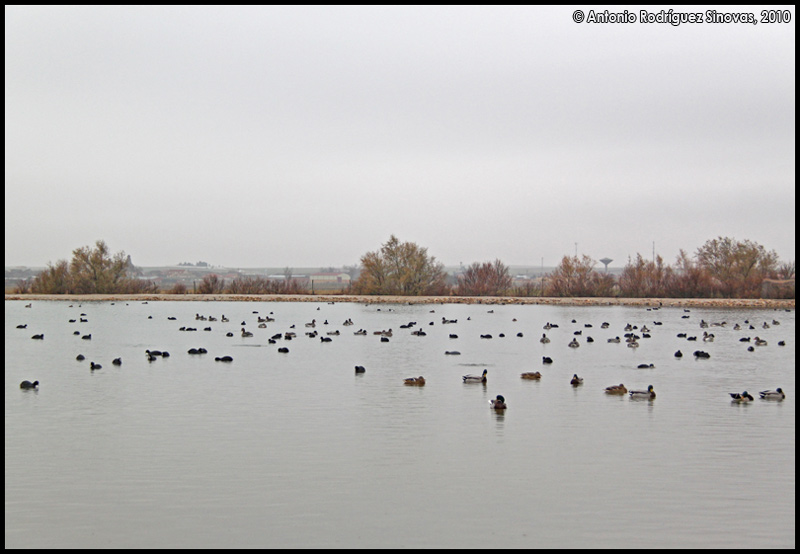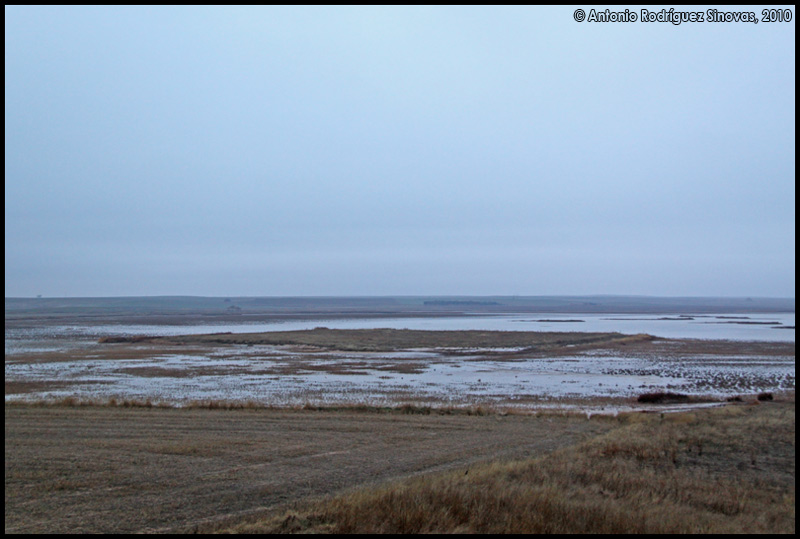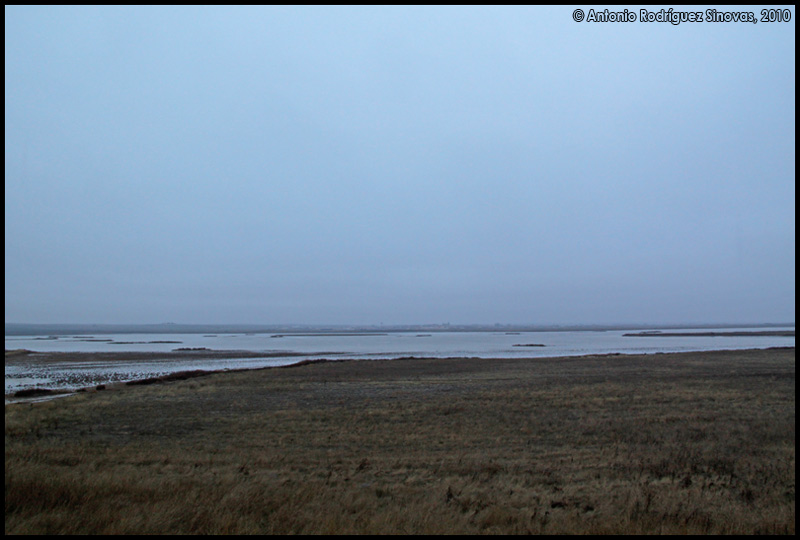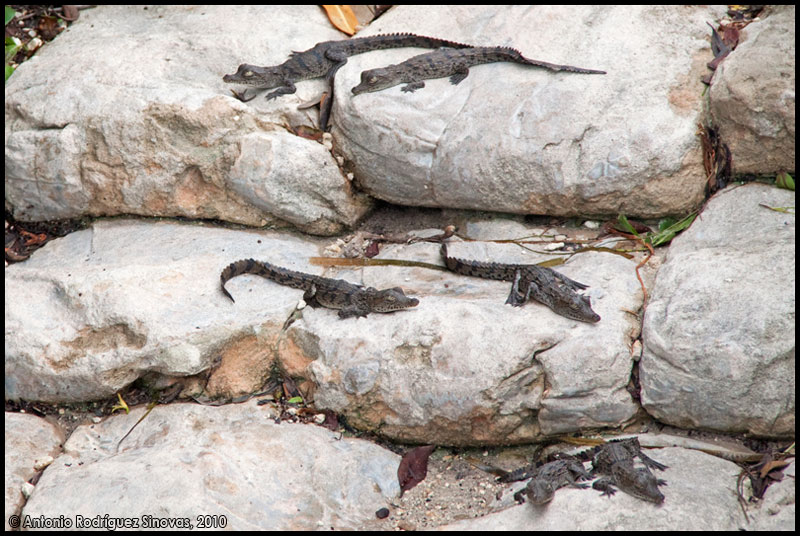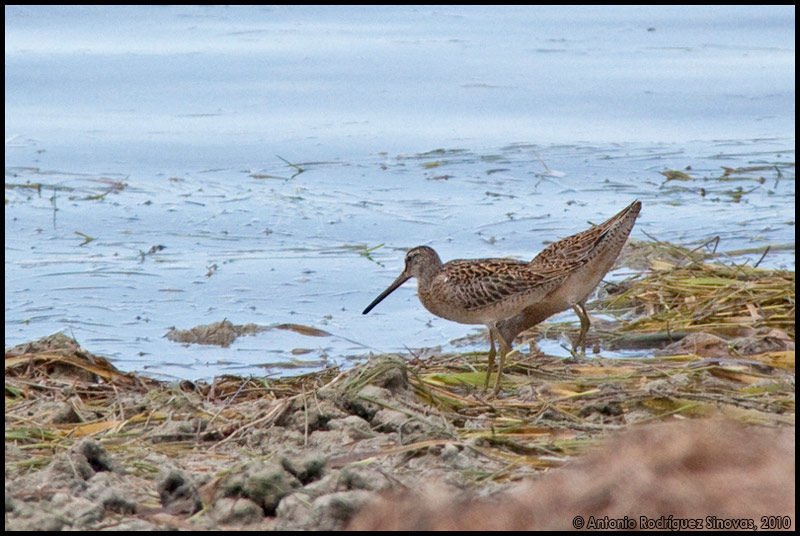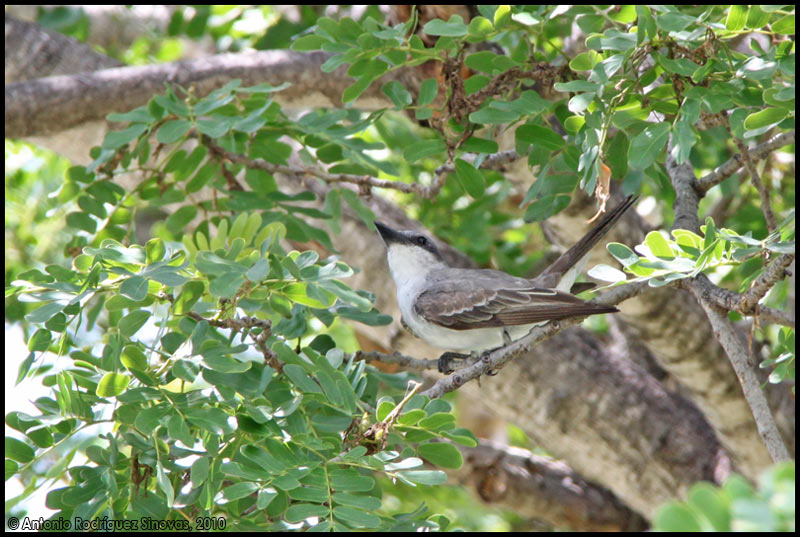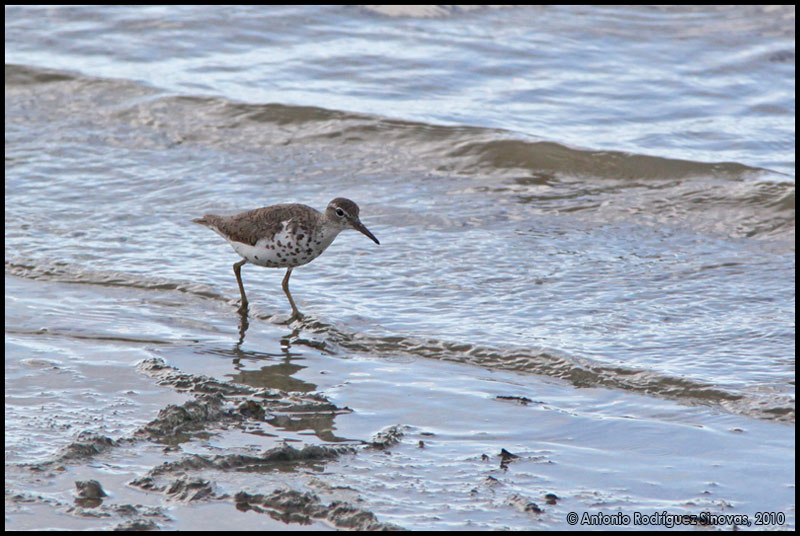En Noviembre de 2009 realicé un corto viaje, por motivos laborales, a Orlando. A pesar de la corta duración de esta estancia, ese viaje me resultó tan gratificante desde el punto de vista ornitológico, que pensé que había que repetirlo de forma más intensa. Así que, ni cortos ni perezosos, dedidimos pasar nuestras vacaciones de 2010 en Florida, tal y como os intento mostrar en detalle en las fotografías que acompañan esta entrada del blog. Se trata de un viaje familiar (con las limitaciones que ello tiene desde el punto de vista ornitológico...), realizado entre el 4 y el 24 de agosto de 2010. Reconozco que las fechas no son las mejores. A pesar de que escapamos de los huracanes, hacía una humedad y un calor de muerte, y los mosquitos nos martirizaron en varias de las visitas (sobretodo a mí, ya que los atraigo especialmente). De todas formas, sirvió para hacernos una idea de lo que es Florida, especialmente la zona del parque nacional Everglades. Espero poder volver algún día en la temporada álgida ornitológicamente hablando (de Noviembre a Marzo).
Last November 2009 I spent some days in Orlando, as I had to assist to working meeting. I enjoyed so much with that visit, that I thought that we should repeat it. For this reason, we decided to spent our 2010 holidays in Florida, as I try to show you in the pictures included in this blog. It was a family trip (with all limitations that it has regarding ornithology...), done between August 4th and 24th, 2010. I have to recognize that these are not the best dates. Although we avoid hurricanes, weather was terribly hot and humid, with lots of mosquitoes. Despite this, we managed to see how is Florida, specially the area of the Everglades National Park. I hope to come back again during the best ornithological season (from November to March).
Nota: Si pinchas sobre las fotografías accederás a la página web que he creado para esa especie (o región), en la cual puedes ver esa y otras fotografías a más aumentos.
Note: If you click in any image, you will enter in the web page that I have created for that species (or region). In these web pages you will see that picture and additional ones at higher magnification.
1. KISSIMMEE
Nuestro viaje comenzó y acabó en Kissimmee, muy cerca de Orlando y de los parques temáticos que la han hecho famosa. Dedicamos 4 días al principio y al final del viaje a disfrutar de dichos parques, aprovechando para visitar entre medio alguna zona interesante, como Blue Springs State Park y Merritt Island National Wildlife Reserve, así como el Kennedy Space Center. En los tiempos de descanso aproveché para pajarear algo alrededor del hotel.
We began and ended our trip in Kissimmee, near Orlando and the well known Disney theme parks. We stayed 4 days, both at the beginning and at the end of the trip to enjoy these parks, but also some nearby interesting areas, as Blue Springs State Park and Merritt Island National Wildlife Reserve and, also, the Kennedy Space Center. In the resting periods I could do some birding around the hotel.
Ardilla gris / Eastern gray squirrel (Sciurus carolinensis)
Sisonte norteño / Northern mockingbird (Mimus polyglottos)
Galápago conchiblando floridano / Florida softshell turtle (Apalone ferox)
2. BLUE SPRINGS STATE PARK
Blue Springs SP está situado al noreste de Kissimmee, a aproximadamente una hora en coche. Se trata de un refugio importante para el manatí durante el invierno, llegándose a concentrar un buen número de ejemplares. Los "springs" son surgencias subterráneas de agua, muy abundantes en esta zona de Florida, y son el origen de un buen número de ríos. Presentan la característica de mantener unas temperaturas casi constantes durante todo el año, haciéndolos muy importantes para los manatís durante el invierno. Además de refrescarnos un poco en la surgencia, hicimos una salida en barco por el río St. Johns, donde pudimos ver hasta 5 ejemplares de manatí, un buen número de ardeidas, algunas rapaces (principalmente águila pescadora, zopilotes negros y auras gallipavos), así como varios aligatores y tortugas. Este día fue especialmente caluroso, con lo que la salida en barco nos alivió un poco.
Blue Springs SP is located north-east to Kissimmee, at about 1 hour by car. It is an important winter refuge for west indian manatees. Springs are subterranean origins of rivers, very abundant in this area of Florida, and share the characteristic of keeping water temperature constant around the year, which is essential for manatee survival during winter. In addition to swimming in the spring, we took a ship in the St. Johns river, where we could see, in addition to 5 manatees, a good number of herons and egrets, some raptors (specially osprey and vultures), and some alligators and turtles. This day was specially hot, and the ship allow us to avoid being exhausted.
Ruta de Kissimmee a Blue Springs State Park
Blue Springs State Park
Blue Springs State Park
St. Johns River, Blue Springs State Park
St. Johns River, Blue Springs State Park
Manatí / West indian manatee (Trichechus manatus)
Garceta grande / Great white egret (Ardea alba)
Garceta tricolor / Tricolored egret (Egretta tricolor)
Garceta azul / Little blue heron (Egretta caerulea)
Anhinga americana / Anhinga (Anhinga anhinga)
Anhinga americana / Anhinga (Anhinga anhinga)
Águila pescadora / Osprey (Pandion haliaetus)
Aligator americano / Alligator (Alligator mississippiensis)
Pseudemys spp.
Florida leaf-footed bug (ninfa) (Leptoglossus phyllopus)
3. DE KISSIMMEE A FLORIDA CITY: EVERGLADES Y BYSCAINE NATIONAL PARKS
Desde Kissimme partimos hacia Florida City (4 horas en coche), para visitar la principal entrada del parque nacional. Estuvimos alojados en un motel en Florida City, durante 6 noches. Decir que al ser época húmeda, la fauna se dispersa más, con lo que se dificulta su observación. El calor tampoco ayuda.
From Kissimme we went to Florida City (4 hours by car), to visit the main entrance to the national park. We stayed in a motel in Florida City for 6 nights. As it was the humid season, animals tend to disperse, making observations more difficult. Hot weather was also a handicap.
Ruta de Kissimme a Florida City
3.1. Butterfly World, Coconut Creek
En el trayecto hicimos esta parada de descanso, que merece la pena. Es un lugar lleno de mariposas y colibríes, volando a tu alrededor. Para los niños, desde luego, algo inolvidable.
In route we visited this area, which was really interesting. This is a park full of butterflies and hummingbirds flying around you. For child, really unforgettable.
Chipe de tierra / Ovenbird (Seiurus aurocapilla)
Anolis marrón / Brown anole (Anolis sagrei)
3.2. Florida City
Al lado del motel ya se podían ver algunas pinceladas de la amplia diversidad que luego disfrutariamos en el parque nacional, aunque con el problema de que algunas de las especies, como los minás y los estorninos pintos, eran introducidas.
Around the motel we could see some species, as an example of all diversity that we would see in the national park, although some species, as minas and commnon starlings, were introduced.
Alcaudón americano / Loggerhead shrike (Lanius ludovicianus)
Miná común / Common myna (Acridotheres tristis)
Cuervo americano / American crow (Corvus brachyrhynchos)
Estornino pinto / Common starling (Sturnus vulgaris)
Basilisco marrón / Brown basilisk (Basiliscus vittatus)
3.3. Everglades National Park: Del Visitor Center a Flamingo
La única carretera de entrada al
Parque Nacional Everglades lleva hasta Flamingo, donde hay un centro de información (también a la entrada). Son unos 50 km por los que vas haciéndote una idea de los distintos habitats del parque. Conviene hacer paradas en las distintas lagunas o balsas que se van observando.
The single road inside the Everglades National Park direct you to Flamingo, where there is an information center (also at the entrance). It is about 50 km long, travelling through the different habitats seen in the park. It is convenient to stop in the different ponds and lacoons indicated in the road.
Busardo hombrorrojo / Red-shouldered hawk (Buteo lineatus)
Busardo hombrorrojo / Red-shouldered hawk (Buteo lineatus) (joven)
Carpintero de Carolina / Red-bellied woodpecker (Melanerpes carolinus)
3.4. Everglades National Park: Snake Bight Trail, Coot Bay Pond y Paurotis Pond
Coot Bay Pond y Paurotis Pond están muy cerca de la carretera, y permitieron la observación, además del paisaje, de pelícanos y aligatores. Snake Bight Trail parecía interesante pero tuvimos que abandonarlo por los mosquitos (me llevé más de 40 picaduras en menos de 10 minutos).
Coot Bay Pond and Paurotis Pond are located very near to the road, and they allowed the observaton, in addition to the landscape, of pelicans and alligators. Snake Bith Trail was promising, but we could not finished it due to the abundant mosquitoes (more than 40 bites in less than 10 mintues).
Snake Bight Trail
Coot Bay Pond
Coot Bay Pond
Pelícano norteamericano / American white pelican (Pelecanus erythrorhynchos) (Paurotis Pond)
Aligator americano / Alligator (Alligator mississippiensis)
3.5. Everglades National Park: Eco Pond
IMPRESCINDIBLE. Uno de los puntos más interesantes. Pequeña laguna con un camino que la circumvala (15-20 min). Pudimos observar aura gallipavo, espátulas rosadas y charranes reales.
INDISPENSABLE. One of the most interesting places. Small pond with a trail around it (15-20 min). We could observe turkey vulture, roseate spoonbills, and royal terns.
Eco Pond (alrededores)
Espátula rosada / Roseate spoonbill (Platalea ajaja)
Aura gallipavo / Turkey vulture (Cathartes aura)
3.6. Everglades National Park: Flamingo
IMPRESCINDIBLE. Desde este punto salen excursiones en barca que no hicimos. Abundantes gaviotas guanaguanare, zopilotes, cuervos americanos, y como destacado, cocodrilo americano.
INDISPENSABLE. From this point you can get a boat trips, that we did no took. Abundat laughing gulls, black vultures, and american crow, and importantly, american crocodile.
Gaviota guanaguanare / Laughingh gull (Leucophaeus atricilla)
Zopilote negro / American black vulture (Coragyps atratus)
Cuervo americano / American crow (Corvus brachyrhynchos)
Cocodrilo americano / American crocodile (Crocodylus acutus)
Cocodrilo americano / American crocodile (Crocodylus acutus)
3.7. Everglades National Park: Coastal Prairie Trail
IMPRESCINDIBLE. Otro de los puntos importantes, en este caso para ver aves limícolas, así como águila pescadora y busardo hombrirrojo.
INDISPENSABLE. Another of the important points, specially for wading birds, and osprey and red-shouldered hawks.
Cormorán orejudo / Double-crested cormorant (Nannopterum auritus)
Ibis blanco / American white ibis (Eudocimus albus) (juvenil)
Águila pescadora / Osprey (Pandion haliaetus)
Busardo hombrorrojo / Red-shouldered hawk (Buteo lineatus) (juvenil)
Agujeta gris / Short-billed dowitcher (Limnodromus griseus)
Andarríos maculado / Spotted sandpiper (Actitis macularius)
Playero aliblanco / Willet (Tringa semipalmata)
3.8. Everglades National Park: Pa-Hay-Okee Overlook
Buenas vistas del parque, pero prácticamente sin fauna. Estuvimos poco rato.
Beautiful landscapes, but almost devoid of animals. We spent only few minutes there.
Pa-Hay-Okee Overlook
Eastern lubber grasshopper (Romalea microptera)
3.9. Everglades National Park: Anhinga Trail
IMPRESCINDIBLE. Uno de los mejores puntos del parque. Es una laguna, con un recorrido que se puede hacer en unos 15-20 minutos (sin paradas), en el que abundaban los anhingas, ardeidas, y sobretodo los aligatores. Impresionaba lo cerca que los tenías. Lo visitamos en 3 ocasiones distintas.
INDISPENSABLE. One of the best places in the park. A pond with a trail that you can do in about 15-20 minutes (without stops), with abundant anhingas, herons and egrets, and specially alligators. Incredible how near you have them. We repited that place three times.
Anhigna Trail
Anhigna americana / Anhinga (Anhiga anhiga) (macho/male)
Anhigna americana / Anhinga (Anhiga anhiga) (hembra/female)
Garceta grande / Great white egret (Ardea alba)
Garcilla verde / Green heron (Butorides virescens)
Perlita grisilla / Blue-grey gnatcatcher (Polioptila caerulea)
Aligator americano / Alligator (Alligator mississippiensis)
Aligator americano / Alligator (Alligator mississippiensis)
Aligator americano / Alligator (Alligator mississippiensis)
Aligator americano / Alligator (Alligator mississippiensis)
Southern water snake (Nerodia fasciata)
Black and yellow garden spider (Argiope aurantia)
3.10. Everglades National Park: Gumbo Limbo Trail
Justo al lado del Anhinga Trail, y más corto que el mismo. Aunque se ven pocas aves, es una zona de vegetación espesa, de aspecto selvático, muy bonita de ver.
Very near to Anhinga Trail, and shorter than it. Although you can see only few birds, is a beautiful area, with very dense vegetation.
Gumbo Limbo Trail
Rana leopardo sureña / Southern leopard frog (Lithobates sphenocephalus)
Anolis marrón / Brown anole (Anolis sagrei)
3.11. Everglades National Park: Pinelands Trail
Un habitat extraño para el parque. Parece como fuera de lugar, pero contrasta de forma interesante con las zonas periféricas anegadas de agua.
This habitat is not common in the park , and constrast with the areas around it, completely flooded.
Pinelands Trail
Cardenal norteño / Northern cardinal (Cardinalis cardinalis)
3.12. Everglades National Park: Shark Valley
IMPRESCINDIBLE. Zona herbácea inundada, con abundantes ardeidas, así como algunos aligatores. Es una excursión muy larga, que se puede hacer a pie, en bicicleta (se puede alquilar una en el centro de información) o cogiendo un trenecito que parte del centro de información y lleva al observatorio del final. Mucho calor..., así que mejor tomamos el tren!.
INDISPENSABLE. Herbaceous flooded area, plenty of egrets and herons, and some alligators. Long trail that you can do walking, in bicycle (you can rent one in the information center), or in a train going from the information center to the observation tower. A very hot day..., thus better to take the train!.
Tortuga caja norteamericana / Box turtle (Terrapene carolina) (en Chekika)
Shark Valley
Garza azulada / Great blue heron (Ardea herodias)
Garceta grande / Great white egret (Ardea alba)
Garcilla verde / Green heron (Butorides virescens)
Carpintero de Carolina / Red-bellied woodpecker (Melanerpes carolinus)
Carpintero de Carolina / Red-bellied woodpecker (Melanerpes carolinus)
Aligator americano / Alligator (Alligator mississippiensis)
Pseudemys spp.
Galápago conchiblando floridano / Florida softshell turtle (Apalone ferox)
Eastern racer (Coluber constrictor)
Florida gar (Lepisosteus platyrhincus)
3.13. Byscaine National Park: Desde Convoy Point
Byscaine NP es un bonito parque situado a 30 minutos en coche de Florida City, y en el que puedes hacer algo de snorkel, así como ver aves marinas (charranes reales, cormoranes orejudos, etc.). Imprescindible tomar un barco en el centro de información en Convoy Point.
Byscaine NP is a beautiful park located at about 30 min by car from Florida City, in which you can do some snorkelling. Also interesting to see sea birds (royal terns, cormorants, etc.). Indispensable to take a boat in the information center at Convoy Point.
Byscaine National Park
Cormorán orejudo / Double-crested cormorant (Nannopterum auritus)
Charrán real / Royal tern (Thalasseus maximus)
Charrán real / Royal tern (Thalasseus maximus)
Charrán real / Royal tern (Thalasseus maximus)
Chipe galano / Prairie warbler (Setophaga discolor)
Chipe galano / Prairie warbler (Setophaga discolor)
Blue land crab (Cardisoma guanhumi)
Blue land crab (Cardisoma guanhumi)
4. CAYOS DE FLORIDA (FLORIDA KEYS)
Tras disfrutar con el parque nacional decidimos visitar los cayos de Florida. Fuimos hasta un motel en Key West (antiguo Cayo Hueso), donde estuvimos 3 noches. El trayecto en coche desde Florida City dura unas 3.5 horas.
After enjoying with the national park , we decided to visit the Florida Keys. We went to a motel in Key West (formerly Cayo Hueso), were we spent 3 nights. It takes about 3.5 hours by car to reach Key West from Florida City.
Cayos de Florida / Florida Keys
4.1. Key West
Una ciudad interesante para visitar, y desde la que salen excursiones en barca para hacer snorkel y ver delfines.
An interesting city to visit. From Key West you can rent a boat trip to do some snorkelling and to see dolphins.
Puesta de sol desde Key West
Playa en Key West / Beach in Key West
Delfín mular / Bottlenose dolphin (Tursiops truncatus)
Delfín mular / Bottlenose dolphin (Tursiops truncatus)
Gaviota guanaguanare / Laughing gull (Larus atricilla)
Zenaida aliblanca / White-winged dove (Zenaida asiatica)
Tirano dominicano / Grey kingbird (Tyrannus dominicensis)
Tirano dominicano / Grey kingbird (Tyrannus dominicensis)
4.2. Fort Zachary Taylor Historic State Park (Key West)
En la punta de Key West se sitúa
Fort Zachary Taylor Historic SP donde es posible hacer observaciones interesantes. Abundaban las palomas coronitas, algunos paseriformes y gaviotas. Es un punto importante durante la migración ya que es el último (o primer) trozo de tierra firme antes de cruzar el mar Caribe.
Fort Zachary TAylor Historic State Park is located in the southern part of Key West. You can do some interesting observations, as white-crowned pigeons, some passerines, and gulls. This an important spot during migrations as is the last (or first) piece of land seen before crossing the Caribbean sea.
Gaviota guanaguanare / Laughing gull (Leucophaeus atricilla)
Paloma coronita / White-crowned pigeon (Patagioenas leucocephala)
Paloma coronita / White-crowned pigeon (Patagioenas leucocephala)
Zenaida huilota / American mourning dove (Zenaida macroura)
Sisonte norteño / Northern mockingbird (Mimus polyglottos)
Sargento alirrojo / Red-winged blackbird (Agelaius phoeniceus) (juvenil)
Zanate común / Common grackle (Quiscalus quiscula)
Iguana verde / Iguana (Iguana iguana)
4.3. National Key Deer Wildlife Refuge (Big Pine Key)
Ciervo de Virginia / White-tailed deer (Odocoileus virginianus)
Ciervo de Virginia / White-tailed deer (Odocoileus virginianus)
Aligator americano / Alligator (Alligator mississippiensis)
4.4. Bahia Honda State Park (Bahia Honda Key)
IMPRESCINDIBLE.
Bahia Honda SP es realmente interesante. Puedes darte un baño refrescante en la playa y al mismo tiempo estar observando un buen montón de limícolas: correlimos menudillo y tridáctilo, chorlitejo semipalmeado, agujetas grises, vuelvepiedras, etc.
INDISPENSABLE. Bahia Honda SP is really interesting. You can refresh yourself in the beach, and at the same time see wading birds (sanderlings, turnstones, dowitchers, etc.).
Martinete coronado / Yellow-crowned night-heron (Nyctanassa violacea)
Chorlitejo semipalmeado / Semipalmated plover (Charadrius semipalmatus)
Correlimos tridáctilo / Sanderling (Calidris alba)
Correlimos menudillo / Least sandpiper (Calidris minutilla)
Correlimos menudillo / Least sandpiper (Calidris minutilla)
Agujeta gris / Short-billed dowitcher (Limnodromus griseus)
Vuelvepiedras común / Ruddy turnstone (Arenaria interpres)
5. DE KEY WEST A KISSIMMEE: EVERGLADES NATIONAL PARK (OESTE), BIG CYPRESS, FAKAHATCHEE STRAND PRESERVE Y FLORIDA PANTHER NWR
Ya de vuelta desde los cayos, nos quedaba por conocer la parte oeste del parque nacional. Cuando preparé el viaje, ya me percaté de que parecía difícil de visitar, pero que había otras zonas interesantes cercanas, como el Big Cypress y Fakahatchee. Realmente en esta zona de Everglades lo único que se puede hacer es tomar un barco o una canoa y visitar la zona de Ten Thousand Islands, o tomar un airboat. En cualquier caso no decepcionó para nada. Estuvimos alojados en Everglades City, durante 3 noches. El trayecto desde Key West duró unas 4.5 horas.
Coming back from Florida Keys, we aimed to know the west part of Everglades. When I prepared our trip, I realized that visiting this area would be difficult, but that there were also interesting areas as Big Cypress and Fakahatchee. In fact, in this part of Everglades you only can take a boat or a canoe to visit the Ten Thousand Islands area, or to take an airboat. Despite this, I think that at the end, visiting this area was also interesting. We spent 3 nights in Everglades City. Moving from Key West to Everglades City took about 4.5 hours by car.
5.1. Everglades National Park (Ten Thousand Islands area y Everglades City)
Como he dicho antes, tomamos un barco para visitar la zona oeste del
Everglades NP, y pudimos disfrutar de la observación de un manatí, varios mapaches, así como de ardeidas, cormoranes y pelícanos. En las costas cercanas, desde Everglades City hasta Chokoloskee, se pueden, así mismo, observar aves interesantes. También tomamos un airboat cerca de Everglades City.
As I said before, we took a boat to visit the west area of the Everglades NP, and we enjoyed seen a manatee, several racoons, and egrets, herons, cormorants, and pelicans. In the nearby coasts, between Everglades City and Chokoloskee, you can also do some interesting observations. We also took an airbat near Everglades City.
Ten Thousand Islands, salida en barco (boat trip)
Manatí / West indian manatee (Trichechus manatus)
Cormorán orejudo / Double-crested cormorant (Nannopterum auritus)
Pelícano alcatraz / Brown pelican (Pelecanus occidentalis)
Pelícano alcatraz / Brown pelican (Pelecanus occidentalis)
Garceta tricolor / Tricolored heron (Egretta tricolor)
(Everglades City)
Garceta nívea / Snowy egret (Egretta thula)
(Everglades City)
Ibis blanco / American white ibis (Eudocimus albus)
Ibis blanco / American white ibis (Eudocimus albus)
(Everglades City)
Zopilote negro / American black vulture (Coragyps atratus)
(Everglades City)
Chorlitejo semipalmeado / Semipalmated plover (Charadrius semipalmatus)
(Everglades City)
Andarríos solitario / Solitary sandpiper (Tringa solitaria)
(Everglades City)
Andarríos maculado / Spotted sandpiper (Actitis macularius)
(Everglades City)
Columbina común / Common ground-dove (Columbina passerina)
(Everglades City)
Cuervo americano / American crow (Corvus brachyrhynchos)
(Everglades City)
Rana arborícola cubana / Cuban tree frog (Osteopilus septentrionalis)
(Everglades City)
Fiddler crab (Uca spp.) (Everglades City)
Everglades National Park, salida en airboat
Everglades National Park, salida en airboat
Everglades National Park, salida en airboat
Águila pescadora / Osprey (Pandion haliaetus) (airboat)
Aligator americano / Alligator (Alligator mississippiensis) (airboat)
Aligator americano / Alligator (Alligator mississippiensis) (airboat)
Aligator americano / Alligator (Alligator mississippiensis) (airboat)
5.2. Big Cypress National Preserve
Para mí,
Big Cypress NP es de lo mejorcito de esa zona, sobretodo el Kirby Storter Roadside Park Boardwalk (sencilla ruta de unos 40 minutos). Espectacular la zona de pantano con cipreses. Bonitas vistas. En Turner River-Wagonwheel-Birdon Road Loop Scenic Drive se pueden ver abundantes aligatores y ardeidas.
Big Cypress NP is one of the most intesting visits in this area, specially the Kirby Storter Roadside Park Boardwalk (easy trail that you can do in about 40 minutes). Very beautiful the flooded area with cypresses. Beautiful landscapes. In Turner River-Wagonwheel-Birdon Road Loop Scenic Drive is possible to see abundant alligators and egrets and herons.
Kirby Storter Roadside Park Boardwalk
Kirby Storter Roadside Park Boardwalk
Kirby Storter Roadside Park Boardwalk
Pseudemys spp. (Kirby Storter Roadside Park Boardwalk)
Anolis marrón / Brown anole (Anolis sagrei)
(Kirby Storter Roadside Park Boardwalk)
Coyote (Canis latrans)
(Turner River-Wagonwheel-Birdon Road Loop Scenic Drive)
Garceta azul / Little blue heron (Egretta caerulea)
(Turner River-Wagonwheel-Birdon Road Loop Scenic Drive)
Busardo colirrojo / Red-tailed hawk (Buteo jamaicensis)
(Turner River-Wagonwheel-Birdon Road Loop Scenic Drive)
Pseudemys spp. (Turner River-Wagonwheel-Birdon Road Loop Scenic Drive)
5.3. Fakahatchee Strand Preserve State Park
Fakahatchee Strand Preserve SP es también muy interesante, sobretodo el Big Cypress Bend Boardwalk (ruta sencilla de unos 30 minutos), más denso de vegetación que en el Big Cypress National Preserve. Pudimos ver un cárabo americano, tortugas, y sapos.
Fakahatchee Strand Preserve SP is also very interesting, specially the Big Cypress Bend Boardwalk (easy trail of about 30 minutes), with more dense vegetation than the Big Cypress National Preserve. We could see barred owl, turtles and toads.
Big Cypress Bend Boardwalk
Cárabo norteamericano / Barred owl (Strix varia)
(Big Cypress Bend Boardwalk)
Ardilla gris / Eastern gray squirrel (Sciurus carolinensis)
(Big Cypress Bend Boardwalk)
Pseudemys spp. (Big Cypress Bend Boardwalk)
Southern toad (Anaxyrus terrestris) (Big Cypress Bend Boardwalk)
Janes Scenic Drive
5.4. Florida Panther National Wildlife Reserve
La visita al
Florida Panther NWR fue simplemente una parada en el trayecto de vuelta a Kissimmee (4 horas). Pudimos disfrutar del paisaje, y de abundantes carpinteros de Carolina, pero evidentemente, con el poco tiempo que estuvimos, no pudimos ver los pumas. Hay una ruta circular que se recorre en unos 40 minutos.
The visit to theFlorida Panther NWR was simply a short stop when we come back to Kissimmee (4 hours trip). We enjoyed with the landscapes and with several red-bellied woodpeckers. However, as this was only a short visit, we could not see the Florida panther. There is a circular trail that you can do in about 40 minutes.
Florida Panther NWR
6. KENNEDY SPACE CENTER Y MERRITT ISLAND NATIONAL WILDLIFE RESERVE
El
Merritt Island NWR es una zona muy interesante especialmente en invierno. Sin embargo, en esta época no había demasiadas aves, y además, la familia ya estaba un poco saturada de tanto pájaro, así que lo visitamos rápidamente. Otro día visitamos el Kennedy Space Center, situado en la misma isla, que merece mucho la pena. Ambos están a una hora de coche de Kissimmee.
The Merritt Island NWR is a very interesting area in winter. However, in summer there was only few birds, and in addition my family was somehow tired of so much birding. Thus we had to do a quick visit. A different day we went to the Kennedy Space Center, located in the same island, a very interesting visit. Both are located at about 1 hour from Kissimmee by car.
6.1. Kennedy Space Center
Visita más bien cultural, para conocer la aventura espacial americana. Intesante, y además se vieron algunas aves.
Cultural visit to know the american spatial adventure. Interesting, and in addition, it was possible to see some birds.
Kennedy Space Center
Chorlitejo culirrojo / Killdeer (Charadrius vociferus)
Gaviota guanaguanare / Laughing gull (Leucophaeus atricilla)
Zanate marismeño / Boat-tailed grackle (Quiscalus major)
6.2. Merritt Island National Wildlife Reserve
Para finalizar, el Merritt Island NWR me pareció una zona muy interesante, que visitaré de nuevo, sin duda, si vuelvo a Florida. El Black Point Wildlife Drive, que se recorre en coche, da muchas opciones de pajareo, y en época buena debe ser realmente espectacular.
To finish, the Merritt Island NWR seemed to be a very interesting area, that I will visit for sure another time if I have to come back to Florida. The Black Point Wildlife Drive, which you have to do by car, gives lots of chances of doing good birding, and in winter will be, probably, spectacular.
Black Point Wildlife Drive, Merritt Island NWR
Black Point Wildlife Drive, Merritt Island NWR
Garceta rojiza / Reddish egret (Egretta rufescens)
Garceta tricolor / Tricolored heron (Egretta tricolor)
En resumen, un viaje interesante, con buenas oportunides para observar fauna. En total pudimos ver 84 especies de aves, 6 de mamíferos, 10 de reptiles y 3 de anfibios. El listado completo de especies por cada zona puede descargarse pinchando
aquí.
In summary, a very interesting trip, with good oportunities to observe animals. We could see a total of 84 species of birds, 6 of mammals, 10 of reptiles and 3 of amphibians. The complete list of species in each area visited can be seen in this link.
















